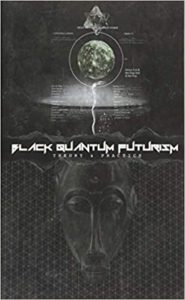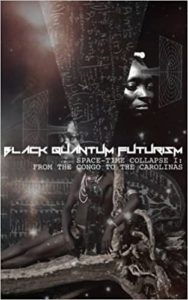Time’s Taboos: Dirty Thoughts on Systems, Syntropy, and Psi
Classical physics, with its totally determinative, forward-in-time, billiard-ball causation, requires sweeping anomalies like psi under the rug, not to mention resigning ourselves to an absence of higher meaning and direction in the universe. Even the local islands of order allowed within the framework of dynamical systems theory that emerged in the middle of the last century with the work of Ludwig von Bertalanffy, Ilya Prigogine, and many others seem (to some) like disappointing consolation prizes in a universe still largely governed by the second law of thermodynamics. Thus in an effort to bridge science and spirituality and transcend bleak mechanistic materialism, a lot of anti-materialist writers are now tweaking thermodynamics in ways that make time appear more symmetrical, the universe less disorderly, and consciousness more central.
The expansive, dissipative past, born in a primordial explosion, seems to demand a receptive orderly destiny to cozily balance things, lest it all end in chaos.
An interesting recent example is the work of Ulisse Di Corpo and Antonella Vannini, who have resurrected mathematician Luigi Fantappie’s mid-20th-century concept of “syntropy,” a postulated countervailing principle to entropy, drawing systems toward complexity, coherence, and order.
Syntropy is retrocausal: Future nodes of convergence and harmony, or “attractors,” exert a pull on the past, according to Di Corpo and Vannini. On the molecular level, special properties of hydrogen bonds (the “hydrogen bridge” discovered by Wolfgang Pauli) make water a uniquely syntropic medium, capable of organizing itself and serving as the basis for the emergence of complex, anti-entropic biological systems out of the entropic, prebiological matrix. In humans and other sentient organisms, emotion acts as a signal current from future attractors; love is a signal of being on a harmonious, life-conducive path, whereas anxiety signals deviation from it. (Thought, by the same token, reflects signals from the past, based on learning and experience.) In this view, as we move toward the future state of order, information is increased—or at least, it does not lose ground in the information/entropy see-saw.
The authors draw on a wide range of research, from quantum mechanics to systems theory to findings in parapsychology, to support their argument. They point for instance to anomalies that seem to indicate consciousness’s power to reverse or inhibit entropy. Robert Jahn and Brenda Dunne’s famous experiments with random event generators at the Princeton Engineering Anomalies Research (PEAR) lab showed that directed attention reduced randomness in the machines; this sort of effect has been found in many different types of experiments in many different laboratories. The authors also invoke Rupert Sheldrake’s arguments about “formative causation”—the notion that there is an extra-genetic template guiding the development of complex organisms and preserving a “memory” of past experiences of a species.
Presaging and hovering over syntropy theory and other ‘complementaristic’ attempts at a more meaning-congenial synthesis are Carl Jung’s theories of synchronicity and archetypes, which were, in their day, also intended to supplement the cold meaningless thermodynamic universe with a sense of meaning, purpose, and direction. Synchronicity, his proposed ‘acausal’ connecting principle, was perhaps what we would now call a retrocausal principle, in which events are, as in syntropy, drawn toward some future coherence. Archetypes, the nodes of this coherence, are much like Plato’s “ideal forms” and Di Corpo and Vannini’s attractors—patterning structures latent within the collective unconscious and giving direction to our lives and fates.
 Such ideas appeal to our human love of balance and symmetry: The expansive, dissipative past, born in a primordial explosion, seems to demand a receptive orderly destiny to cozily balance things, lest it all end in chaos. But is that really the case? Is it really impossible to account for complexity and order, explain psychic anomalies, and make a home and a role for consciousness without departing from a traditional systems framework?
Such ideas appeal to our human love of balance and symmetry: The expansive, dissipative past, born in a primordial explosion, seems to demand a receptive orderly destiny to cozily balance things, lest it all end in chaos. But is that really the case? Is it really impossible to account for complexity and order, explain psychic anomalies, and make a home and a role for consciousness without departing from a traditional systems framework?
Balance Within Imbalance
In thinking about systems and complexity, I have always taken inspiration from Eric Jantsch’s breathtaking 1980 summa, The Self-Organizing Universe, which showed how entropy-exporting (or “dissipative”) systems arise and flourish and complexify—and give rise to meaningful order—within the traditional principles of thermodynamics. Dissipative systems generate complex emergent forms, including not only the complex forms of galaxies, animal and plant life, and the brain, but also the regularities of social existence and universal symbolic structures related to our life as humans, including the most profound cultural symbols. I think systems theory, and its more recent offshoots like chaos theory, fractal geometry, and so on, can actually go a long way toward explaining the “balance within imbalance” of the cosmos without invoking new complementary principles.
Some portion of the uncanny regularity we detect in our lives arises from how we unconsciously cast meaning forward and reel it in, responding to our own future potentialities. We may even, without knowing it, be co-creating the systems of the natural world.
For example, orthodox systems theory demands no syntropic attractor to account for the geometrically perfect, chambered shell of a nautilus, and doesn’t even suggest there is a blueprint for it within the mollusc’s DNA. A very specific schedule of protein synthesis and chemical reactions triggered by DNA transcription gives rise to cellular structures, which give rise to further structures, in a kind of recursive cascade of emergent forms of increasing complexity; the adult form of the animal, including the intricate structure and pattern of its shell, is a more or less predictable outcome of its growth and energy exchange with its environment.
What’s more, even mechanisms for ‘Lamarckian’ morphological change over the generations in response to life events and environmental pressures are now being revealed through epigenomics: Changes to the cellular environment alter gene expression, with no need to invoke something like Sheldrake’s morphogenetic fields. The symphony of molecular and cellular processes is mindbogglingly intricate, but there is no reason or need to think that the final completed form of the animal is (retro)causative in some abstract Platonic fashion, or that there is any prototype for the nautilus either ahead in the future or out there in some nonlocal informational ether.
 Attractors as chaos theory understands them (versus in syntropy theory) are regularities that emerge as a result of multiple interacting variables that produce feedback loops in the “phase space” of a complex system; these exert a kind of gravitational attraction toward a certain form, like a whirlpool, but there are no blueprints for them. It’s just that the myriad mutually interfering/balancing forces create a regularity of outcomes that looks in hindsight somehow intentional, orderly, and even intelligently designed. It is in this sense that I invoked the concept of attractors in thinking about now misrecognized psi leads to apparent synchronous occurrences in our lives; the difference from Jung’s concept of synchronicity or from Di Corpo and Vannini’s concept of syntropy is that the attractor, the meaningful pattern, is a result, not a cause.
Attractors as chaos theory understands them (versus in syntropy theory) are regularities that emerge as a result of multiple interacting variables that produce feedback loops in the “phase space” of a complex system; these exert a kind of gravitational attraction toward a certain form, like a whirlpool, but there are no blueprints for them. It’s just that the myriad mutually interfering/balancing forces create a regularity of outcomes that looks in hindsight somehow intentional, orderly, and even intelligently designed. It is in this sense that I invoked the concept of attractors in thinking about now misrecognized psi leads to apparent synchronous occurrences in our lives; the difference from Jung’s concept of synchronicity or from Di Corpo and Vannini’s concept of syntropy is that the attractor, the meaningful pattern, is a result, not a cause.
One of Jung’s important insights about religion was that humans personify abstract functions and forces in order to conceptually manipulate them using the familiar metaphors of social interaction (“negotiating” with gods and spirits, for example). Yet his archetypes are themselves sort of artificial personifications—or you might say, mechanizations—of universal human psychic and experiential regularities. The fact that humans everywhere experience certain common themes like heroism and motherhood and the ironic self-undercutting of the “trickster” arguably just reflects the regularities of the mindbogglingly complex systems (within systems within systems…) of human life and mind (including psi, in the case of the trickster), not the machine-like patterning and organizing activity of a preexistent organizing psyche.
I am suggesting that there is no real blueprint for our unfolding “out there” in the collective unconscious, or in the future as understood by syntropy theory. We are radically free agents, and it seems important not to lose sight of this in our attempts to rescue order and meaning (and meaningful anomalies) in the universe. Syntropy and related ideas may be reifying the regular outcomes of systems whose complexity just happens to exceed our human capacity to grasp.
Penetrating Time
Where I strongly agree with both syntropy theory and Jung’s theory of synchronicity, however, is that I think consciousness plays a crucial, decisive role in making our future and shaping reality. Many interpretations of quantum theory insist upon this. And I also strongly agree that the crucial X-factor missing from the standard thermodynamic picture is specifically the future’s ability to affect the past via consciousness (i.e., psi). Systems and attractors, even if they are not determinative, are indeed atemporal, and a future systems theory will need to accommodate consciousness’s ability to penetrate the veil of time.
The boundary we call the “present” may not be a knife edge but a blurry mess, with latent potentials extending well into the past and future.
I have been suggesting on this blog that some portion of the uncanny regularity we detect in our lives arises from how we unconsciously cast meaning forward and reel it in, responding to our own future potentialities. This may include even “we” as observers of other, natural and biological systems (like the slimy systems that produce molluscs and seashells)—and thus we may even, without knowing it, be co-creating the systems of the natural world. In other words, our fate as well as the fate of systems under our purview and observation emerge from a pattern of interaction with the field of future potentialities that we unconsciously detect and respond to, ever misrecognizing (or ‘misunderestimating’) the creative role of consciousness in the whole picture. (I even wonder if some of the effects of globally changing biological systems described by Sheldrake, such as lab animals on one continent learning a new task more readily after conspecifics are trained on that task on another continent, may reflect the role of human consciousness, i.e. the knowledge and intentionality of the experimenters, in shaping those systems.)
 Yet, while psi appears to be an interaction with the future (and past), I would argue it is not symmetrical with entropy, and not some kind of natural, born complement, like yin to yang. This may seem like a quibble, but it actually makes a world of difference, because it restores an instability or imbalance—indeed, incoherence—that needs to be there. Noncoherence, the nonidentity of things with themselves—what the Buddhists call “no self” and what Slavoj Žižek calls “parallax”—is essential to the openness and nondeterminism of the universe and the real existence of free will.
Yet, while psi appears to be an interaction with the future (and past), I would argue it is not symmetrical with entropy, and not some kind of natural, born complement, like yin to yang. This may seem like a quibble, but it actually makes a world of difference, because it restores an instability or imbalance—indeed, incoherence—that needs to be there. Noncoherence, the nonidentity of things with themselves—what the Buddhists call “no self” and what Slavoj Žižek calls “parallax”—is essential to the openness and nondeterminism of the universe and the real existence of free will.
The past is half of time, but its complement is purely virtual or imaginary, and the boundary we call the “present” may not be a knife edge but a blurry mess, with latent potentials extending well into the past and future, insofar as they remain unobserved and unmeasured, and thus opening up a whole realm of PhilDickian effects. If psi is related to the perception of quantum potentials and probabilities, as I have suggested in previous posts, it may arise from precisely this asymmetry in the order of things (i.e., parallax). Both the mind and our culture balk at such an asymmetry, though, as well as at the notion that the past and future can interpenetrate. Despite ostensibly offering a way for the future to affect the past, I think concepts like syntropy and synchronicity also paint a picture of a pristine, family-friendly cosmos in which truly messy asymmetries in the order of things, and taboo possibilities like time travel, are papered over.
The Future Looks Shitty From Here
Part of the problem syntropists have with existing dynamical systems theory is that systems “shit”: They take in energy, convert it to order/information, but ultimately excrete (“dissipate”) chaos. They are not content to find meaning in local islands of order (dissipative systems) so long as there is seemingly a larger gain in disorder across the universe as a whole. Even the most beautiful and perfect systems wallow in a bigger pigsty universe where the shit (chaos) just piles higher and deeper. In a purely classical universe, that shit would indeed ultimately swallow and engulf the whole.
The latent Not Yet in quantum physics is often described as a “smear” of potentials existing in a state of quantum superposition. Thus we should not miss how disgusting the world of unactualized potentiality is.
Quantum physics (at least as I understand it) is not as interested in this classical “future” and “past,” as demarcated neatly on some dimensional timeline, as it is in the distinction between the Actual and the Potential, or what I like to think of as the Is and the Not Yet. At any given point in time, from the standpoint of an observer, the past may be a good-enough proxy for the Is, or what has been “collapsed” through observation, but in fact even the landscape of the Is is permeated by the Not Yet in the form of vast reserves of unobserved and thus uncollapsed potential that remain out of view, just under the skin of the visible universe—like Schrodinger’s cats trapped in the walls. This may help account for various retrocausal effects seen in laboratories, such as the rather mindbending experiments of Helmut Schmidt, where subjects affected a random number generator in the past via their intention; according to Henry Stapp, it may also account for Benjamin Libet’s paradoxical findings that seemed to disprove the existence of conscious will (I’ll return to this in a later post on Stapp’s fascinating work).
That latent Not Yet in quantum physics is often described as a spread-out “smear” of potentials existing in a state of quantum superposition. Thus we should not miss how disgusting the world of unactualized potentiality is: Isn’t that “smear” a little bit like the pigsty future promised by classical thermodynamics? When you think about it, unactualized potentials are the ultimate mess; it is only when consciousness engages in observation that that mess is “cleaned up” so to speak, to become something real and solid and shiny and pristine and definite. Mentally intervening or meddling in the not-yet-actual via psi, though, is basically wallowing in that disgusting gray smear of quantum possibility.
 The syntropy model with its future attractors drawing us toward them with love sort of bowdlerizes the disgusting-sounding possibilities latent in quantum physics (and psi), by replacing the indeterminate gray smear with an “already existing future” that looks rather like a scene from a Jehovah’s Witnesses pamphlet: Shiny beautiful glowing perfect people beckoning to you to come join their church picnic. But I think the syntropists (and Platonists, and Jungians) needn’t worry: Consciousness itself is bound to transform the from-here-disordered-looking future into some kind of order and information, even if there’s no way to predict what that order will look like.
The syntropy model with its future attractors drawing us toward them with love sort of bowdlerizes the disgusting-sounding possibilities latent in quantum physics (and psi), by replacing the indeterminate gray smear with an “already existing future” that looks rather like a scene from a Jehovah’s Witnesses pamphlet: Shiny beautiful glowing perfect people beckoning to you to come join their church picnic. But I think the syntropists (and Platonists, and Jungians) needn’t worry: Consciousness itself is bound to transform the from-here-disordered-looking future into some kind of order and information, even if there’s no way to predict what that order will look like.
And we do home in on that future precognitively. But that precognitive engagement with our future potential actually trespasses on taboos even more basic than the scatological: Psi, insofar as it is ‘intercourse’ with the hidden Not Yet under the skin of reality, is basically the temporal equivalent of incest: fundamentally prohibited, and declared “impossible” because we just don’t want to have to form a mental picture of something that is deeply, deeply awkward.
Time and the Oedipus Complex
Even if we are ‘intellectually’ on board with the notion of precognition, some part of us balks at the perversity of a universe that includes information (let alone objects and people) traveling backward in time. The perversity of time travel is, I think, the real meaning of the myth of Oedipus.
A story about a prince taking the place of his own father and marrying his own mother is about the closest the ancient world had to a story about time travel and its paradoxes. Sophocles was Greece’s Phil Dick.
The ancients reckoned the forward, unidirectional, linear flow of time (chronos) through generations—the inevitable, always-forward-moving structure of kinship as well as the forward march of political regimes passed down via offspring. In a sense, kinship and politics were kind of equivalent to the second law of thermodynamics for us, something inexorable and irreversible, moving in a single direction, never flowing backwards, and always basically getting worse (thus always dramatized as tragedy). Thus a story about a prince taking the place of his own father and marrying his own mother is about the closest the ancient world had to a story about time travel and its paradoxes. Sophocles was basically Ancient Greece’s Phil Dick.
 That Oedipus was effectively a time traveler has long been part of the esoteric understanding of that myth. Consider the role of the Sphinx, whose riddle Oedipus correctly answers before he becomes King of Thebes. Sphinxes are symbolic guardians of Time. When HG Wells’ Time Traveler (in The Time Machine) visits the distant future, for example, he finds that a great Sphinx structure has been erected more or less on the site of his laboratory. After his machine is confiscated, he must penetrate that structure to find it and return to Victorian England.
That Oedipus was effectively a time traveler has long been part of the esoteric understanding of that myth. Consider the role of the Sphinx, whose riddle Oedipus correctly answers before he becomes King of Thebes. Sphinxes are symbolic guardians of Time. When HG Wells’ Time Traveler (in The Time Machine) visits the distant future, for example, he finds that a great Sphinx structure has been erected more or less on the site of his laboratory. After his machine is confiscated, he must penetrate that structure to find it and return to Victorian England.
The way one defeats time is by reordering it, signaled by the “creature” in the Sphinx’s riddle: What goes on four feet in the morning, two in the afternoon, and three in the evening? Viewers of the play knew the answer was “man,” who first crawls, then walks upright, then moves with the aid of a cane; but the story implied that most “men” don’t get the answer, and this ignorance is their Achilles heel, enabling the Sphinx (/Time) to defeat them. Oedipus was himself the completion of the riddle, in some sense; he walks with a limp, and his name means “swollen foot” (his father Laius and other male ancestors all also had names connoting “lame” or “limping”). Thus Oedipus was the sole (get it, sole?) human who walked upon only one (good) foot—thus completing the quaternity of the Sphinx’s riddle, but further destroying its numerical sequence.
Blindness and Enjoyment
Di Corpo and Vannini argue that emotions, principally love, are the cord drawing us toward future order. If I am right, it may be something more like enjoyment that transcends time and acts as the carrier of information from our future. (Love per se is a special condition in which we experience enjoyment in common with other people—a unique problem at the heart of social existence and a crucial way in which psi guides and directs us toward others to reproduce and form complex social systems.) I have argued, based on a metaphysically broadminded reading of Lacan and Žižek, that enjoyment must in some sense be “nonlocal”; it is through repetition that a symptom acts as a mechanism amplifying the future’s effect on the past and vice versa. Symptoms are atemporal/acausal formations within the sea of enjoyment. Hence the connection between prophecy, neurosis, art, and ritual/repetition.
How many of our dreams tell of future events that might have occurred but didn’t, because we live in an open, nondeterministic universe? Psi may always be visible only in a very narrow band at the edge of our consciousness.
Enjoyment, which “impossibly” connects the future to the past, is thus what turns psi into a psychoanalytic problem: The point is not merely that Oedipus “traveled into the past” by marrying his mother and killing his father; it is that he committed these crimes and enjoyed them, and only belatedly discovered what it was that he had been enjoying. His guilt was not over his actions but over his misrecognized enjoyment. Our ignorance as to our enjoyment (i.e., our blindness to it) allows both the past and future to affect our lives in uncanny and seemingly “impossible” ways like synchronicity.
Oedipus’s self-blinding upon discovering his crime is always seen as a kind of dramatic literalization of his own blindness at not having heeded various prophecies, like those of the blind Tiresias—another character who (psychically, in this case) “travels through time.” It suggests to me a secret connection or even identity between these two figures: They are two sides of the same coin. The past and future cannot affect the present except insofar as we are blind to our true enjoyment; they derive their power (and ability to travel through time and space, their nonlocal “cloaking” from the eyes of Heisenberg) from being unseen and unknowable—at least by the persons they most closely affect. Hence prophets are, at least figuratively, blind; and we are largely blind to psi’s actions (and enjoyment) in our lives.
 As I mentioned in my post on Vallee and remote viewing, fundamental philosophical conundrums effectively “hobble” or at least severely restrict psi, including the Platonic inability to know what we don’t know. This as well as other factors, such as the “perverse” fact that penetrating the veil of time involves secret/disavowed enjoyment, may tend to work against individually “knowing the future” in a literal or actionable way.
As I mentioned in my post on Vallee and remote viewing, fundamental philosophical conundrums effectively “hobble” or at least severely restrict psi, including the Platonic inability to know what we don’t know. This as well as other factors, such as the “perverse” fact that penetrating the veil of time involves secret/disavowed enjoyment, may tend to work against individually “knowing the future” in a literal or actionable way.
Ordinarily, the future seeps into our consciousness to the degree that we misinterpret it, and our most vivid foreknowledge is only verified after the fact, in dreams, artworks, and other nonliteral “transmissions” that usually don’t seem very useful in consciously altering our course or changing our destiny. By the same token, when psi does provide premonitions or warnings we heed, the status of those “predictions” as information may evaporate because we have no way to verify them (except in vivid cases like airplane crashes or ocean liner sinkings). How many of our dreams tell of future events that might have occurred but didn’t, because we live in an open, nondeterministic universe? Psi may always be visible only in a very narrow band at the edge of our conscious awareness.
The methods devised at SRI to amplify the psi signal and make it efficacious in the real world involved protocols to work around these types of problems. Remote viewers must be “blind” (in the figurative, experimental sense) to the target, first of all. Thus psi really only works in groups of at least two, preferably three people, who possess different degrees of knowledge about the target or question to which an answer is sought. Also, the rigid formalistic protocol itself works to distract and occupy the conscious mind so that psi information can be received more easily via unconscious channels. And, most importantly, confirmation is necessary, which may be understood as providing the insecure psi mind with rewards (like sardines to condition the behavior of a dolphin) or may be understood as the actual target of remote viewing, if we accept the possibility that it may in fact just be precognizing our own future states of enjoyment/reward. (In his book Limitless Mind, Russell Targ considers feedback a usually essential part of Remote Viewing; although, in considering this question of its necessity, he does cite a few experiments that seem to show successful remote viewing in the absence of feedback.)
From Syntropy to Parallax
So to sum up: Order not only arises provisionally, contingently, within the “doomed” chaotic system described by classical thermodynamics, but also hovers over and lurks within it as consciousness in its constant interaction with unrealized potentiality. Syntropy, like certain other concepts in post-materialist thought, might best be understood as an umbrella term covering various entropy-defeating phenomena in their as-yet mostly unmapped interaction, rather than as as a reified principle or “force” all its own. I’m not sure Di Corpo and Vannini mean to suggest that that syntropy is actually causative, any more than Jung meant to imply that about synchronicity, yet these concepts are susceptible to that interpretation, and certainly Jung’s concept (which suffered from vagueness) has been ‘perverted’ in that way over the years.
Fortunately the unconscious, which has no sense of time, cannot be offended by the outrageous paradoxes and perversions that enable quantum physics—and psi—to work.
Einstein can serve as a warning about the haste to add new principles when we don’t immediately like what we see about reality. He felt that the picture of the universe in disequilibrium that his own theories led to required a new yet-undiscovered principle, so he postulated a “cosmological constant” to make the equations add up in a more intellectually and aesthetically congenial way. There was no evidence for such a thing, and later he regarded this as the biggest blunder in his career (although new theories of dark energy do sort of harken back to it). The physical laws we know about may not be the only ones, and as Sheldrake importantly argues, they may not actually be set in stone; but they still may be able to do the job. Quantum physics seems like it provides what we need, particularly given that it not only allows but actually requires precisely what was missing in the classical universe: a role for consciousness, and the possibility of causal interactions that defy our commonsense understandings of spacetime.
Part of what keeps us from embracing the discomfiting parallax and asymmetry of things is our sense of meaning as a kind of equals sign. “Meaning” in this sense collapses when we replace the Minkowski glass-block universe (where the future already exists) with a state of radical indeterminacy. In lived fact, there is no meaning, just a succession of states within a larger turbulent, looping flow. Those states appear “meaning-like” in hindsight, when we imagine time as flattened and static, but that fiction of meaning is a screen masking the acausal obscenities I described.
Fortunately the unconscious, which has no sense of time, cannot be offended by the outrageous paradoxes and perversions that enable quantum physics—and psi—to work.







A brief note that might encourage others on this, perhaps the thorniest subject of them all in psi. I think that it’s fair to say that no one has had anything like the definite word on the subject, though Targ sounds rather cocksure and so does Taff, though they are at odds. The possibility of ‘uncollapsed’ states in present or supposedly ‘past’ time, a perfectly coherent proposition, makes certainty recede even further, to my mind. The only peace I have come to is that the questions of free will and determinism may be in reality undecidable, which reduces my need to situate causality, a dubious concept to philosophers of high repute, notably Hegel as I understand it, in unassailable temporalities. Braude in The Limits of Influence propounds a case for Precognition Without Retrocausation, presumably for philosophical acceptability as much as philosophy. It may be worth a read for ideas; he also raises questions about occult enjoyment, bizarre bad luck, and lifelong underachievement, unfortunately not addressed at great length in his work unless in his first on multiple personality. In Pluck or MacCruiskeen ‘s words the whole subject seems ‘an insoluble pancake.’